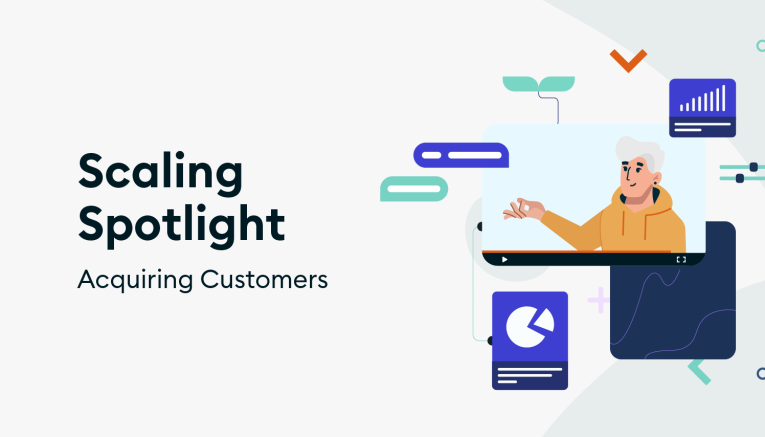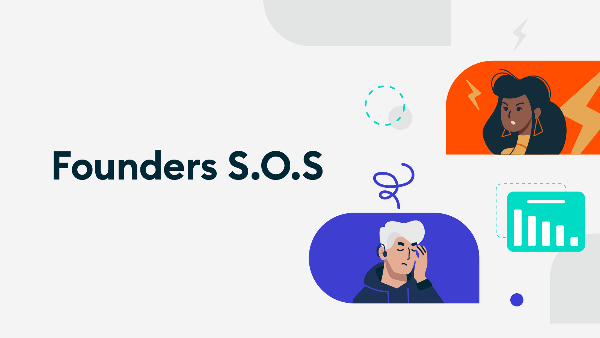Customer Acquisition: Key Strategies

All businesses need customers. You could even describe customers as your organisation’s lifeblood, and with this notion, it demonstrates just how important it is to acquire - and keep - high-value customers.
But without a defined customer acquisition strategy, it can be tough to draw in new customers.
By creating a clear strategy, you’ll be able to keep track of what you’re spending, understand how to generate demand, invest in high-performing channels for your target customers, and convert leads into paying customers.
How to create a customer acquisition strategy
When creating a customer acquisition strategy, there are a number of best practices you’ll want to consider…
Identify target audience
First and foremost, you need to figure out who your customers are.
Make a list of their characteristics, get to know what they like and dislike about your brand, and find out your customers’ needs and how you can fulfil them. This information will help you not only create a great product but also a great company culture.
You need to make sure you have the right target audience before you decide which acquisition channel to utilise.
Identifying who you are targeting in your marketing and sales efforts will be more effective and can lead to better gains in growth in your business.
To figure out who you’re trying to sell to, first decide what you’re selling and try to picture your ideal customer or client.
Define your goals
Once you have your ideal customers in mind, it will be much easier to define your goals and objectives.
Setting an end result will help you think through your customer acquisition plan and guide your efforts. But it’s important to set goals for your strategy that account for customer churn and current customer growth.
If you measure customer acquisition metrics like monthly recurring revenue (MRR), customer acquisition costs (CAC), customer lifetime value (CLV), and churn rate, you can create a strategy that aligns with your business goals - and prove your marketing efforts are working.
What is a customer acquisition channel?
When it comes to creating an effective sales strategy, identifying your ideal customers and customer acquisition goals are only the beginning.
Next, you need to think about which channels to use based on your research and the types of content that do the best in said channel.
But what is a customer acquisition channel? It’s any place your customers meet your brand for the first time - whether through a paid ad, organic search, or social media.
Customer acquisition channels are how you bring in new customers. Popular channels include:
- SEO: Written, long-form content that's optimised for search engines
- Instagram: Visually attractive posts and short videos
- Facebook: Live video streaming, one-to-one messaging, advertising
- YouTube: Longer, more informative, and entertaining video content
- Paid social: Short, snappy ads with compelling visuals
- Referrals: Discounts and loyalty rewards
Create a unique strategy for each channel
When creating your strategy, you may think you want to get on every channel possible from the very beginning, but in reality, this can diminish your customer acquisition strategy.
If you want to reach customers in their early 20s, you will likely find your audience is on TikTok or Instagram, meaning it wouldn’t be smart business to put all your resources into Facebook or Google Shopping ads.
There are a few things to focus on when creating a marketing strategy for each channel:
- The content your audience interacts with
- What your competitors are posting
- What your KPIs tell you
The right channel will depend on your customer acquisition strategy. If you discover your customers are mostly on Facebook, then you won’t need to use TikTok; similarly if you find that you can say more - and engage more - with video than with words, Instagram or YouTube may be a better route.
Research the best strategies for each channel you use to get the most out of your customer acquisition efforts.
Offer a free trial
It’s not easy attracting new customers. And so to maximise your efforts, it’s always useful to have multiple options to acquire new customers and convert them into loyal customers.
And a great way to draw in potential new customers to experience your product is by offering a free trial. Customers will learn more about your product, and it will also act as a way to generate leads for your brand.
But don’t fret if they don’t become a customer after the trial period, as they will remember your brand because they will have experienced it before.
Communicate with your customer base
Without direct feedback from your customers, it would be difficult to find any gaps within your customer acquisition process. So, you’re going to need to request this valuable information in order to collect it.
Social media posts, customer surveys, customer interviews, email contact forms, and blog posts are all excellent ways to communicate with your customer base; you can ask for feedback, promote a deal, or simply be available to talk to with customers.
Your communication plan needs to keep conversations going with your customers, as this will help you identify and capitalise on the value customers expect from your services and products.
Measure and improve your strategy
You wouldn’t drive your car with your eyes closed, so why would you try to build an online business without utilising analytics? If you don’t know where people are visiting, what is or isn’t working, and how your pages are performing, then you’re headed for failure.
It’s important to analyse and measure your results, because there are so many factors that can affect customer acquisition. Analytics can help you figure out:
- Where customers hear about your products
- Where customers bought products
- Where customers live
- Other identifying factors too
However, before you start tracking, think about which customer acquisition metrics you’re going to monitor, including:
- Customer acquisition costs (CAC)
- New customer growth
- Customer lifetime value (LTV)
- Churn rate
- Ratio of lifetime value to customer acquisition cost (LTV:CAC)
Although customer acquisition may feel like a long slog, with the right preparation and tactics, you can effectively attract high-value customers to your business, and keep them around for much longer.
Optimise your website for a better experience
No matter your business or industry, if you’re dealing with customers, your website needs to be optimised. And in the same token, if you want to improve your business, you need to put in the effort to improve your website.
Benefits of optimising your website include:
- Optimised content is easier for both search engines and people to read through
- It’s much easier for people to find what they are looking for on your site
- Using social media services like Facebook, Twitter, and Google+ will be much more effective
- Your bounce rate will go down, meaning people will stick around and check out more than just one page on your site
- No more duplicated content
By utilising smart tactics that can pique the attention of prospective customers, you’ll have a stellar customer acquisition strategy in no time.


